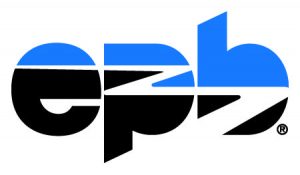
Sometimes Saturdays come on Thursdays. When you own your own small business, you have to flex around client needs/crises, deadlines, business development, client management and lots of other to-dos. Going hard for three or four days in a row sometimes means your brain needs a day off. There are times my brain can’t wait until Saturday for a day off. When that happens, I’m glad I don’t have to fudge an excuse for my boss.
I wouldn’t trade owning a business for anything. Eight and one-half years into running my writing and consulting firm, I’m working harder than ever. But I am also happier and more fulfilled than ever.
One source of my fulfillment comes from learning new things by talking with whip-smart people in the electricity, natural gas or oil business. I feel re-energized when I speak with people who are taking a fresh, creative approach to perennial challenges, like employee communications.
I had plenty of opportunity to do that recently when researching an article for Public Power magazine. Although the article focused on best practices in customer service, a lot of the interviews ended up touching on organizational culture or employee communications, to one degree or another.
Employee Communications Reflect Organizational Values

Although I interviewed a number of people for that article, my interview with Karen Thomas (left), assistant vice president for customer relations for the Chattanooga Electric Power Board (EBP), a public power electric and telecommunications utility, really stood out.
A good bit of our conversation focused on EPB’s organizational transformation and the importance of clear and consistent communications.
It took EPB’s leaders years of concerted effort to become more customer-centered, Karen recalled. “It all starts with culture, and it has to start at the top. We looked at every business process we had and asked, ‘Do we do this for our convenience, or our customer’s convenience?’ If it was for our convenience, we changed it.”
Karen’s comments were a perfect illustration of a currently popular exhortation from consultant Simon Sinek: “Start with Why.” The “why” questions Sinek asks include:
- Why do you do what you do?
- Why do you get out of bed in the morning?
- Why should anyone care?
In asking these foundational questions about purpose, EPB was about 10 years ahead of this particular managerial curve.

EPB recently landed at the top of its class in the 2017 J.D. Power and Associates residential electric customer satisfaction survey, its second year at the top of the midsize utilities in the South region category. I asked Karen what EPB did to climb out of the middle of the pack and reach the pinnacle among its peers. “Culture,” she answered.
What, exactly, does that mean? “We instituted some changes that made customer service everyone’s job, regardless of the name of the department in which they were working,” she told me. “That’s a shift that took place during the leadership of Harold DePriest (above right), who was president and general manager from 1999 to 2016. Everyone has to own customer service. It is not the exclusive responsibility of the Customer Service department.”
Communications Tip of the Month: Employee communications embody and reflect an organization’s culture, which begins at the top and which permeates all departments within that organization. Your words must align with your deeds, and all of that has to be grounded in your thinking. Are you walking the talk?
So what does that look like at EPB today? One part of the battle to win customers’ hearts and minds is by hiring new employees who are a good fit for the utility’s service-oriented culture. EPB does that with its new-employee onboarding process for its customer service representatives (CSRs), which has been in effect for about three years.

The CSR new-employee onboarding process described by Karen is a terrific idea, definitely worthy of emulation by other utilities. Although the process she describes below applies only to newly hired CSRs, to my mind, there’s no reason it could not be used for all newly hired employees, regardless of the department in which they were scheduled to work.
Employee Communications: First Impressions Critical
A baby’s early life experiences consciously or unconsciously color him or her for the rest of their life. Similarly, a new employee’s first experiences with an organization will form a prism through which he or she will view the organization for a long time.

“We have a new CSR onboarding process (left) where all new hires spend a week learning about EPB — what it does, how it does it and why it does it the way it does,” Karen told me. “During this first week, we don’t discuss the specifics of any of the work the new CSRs will be doing. We want to show them how we operate as an organization.”
“After a week telling them about us, on a Friday, we say, ‘If you like what you have seen and heard, we’re delighted you’ll be working with us. We’ll see you next Monday. And if you don’t want to work here, that’s OK too.’ We have never lost a single new CSR hire since introducing that new on-boarding process,” Karen said.

Karen said EPB is in the enviable position of only hiring the cream of the crop: The utility hires 10-12 new employees for each 800-1,000 applications it receives. That means EPB hired far less than 1% of the people who apply to work there. By emphasizing the right cultural fit, EPB is practicing what other category leaders like Southwest Airlines do: They show new hires who they are and they welcome those who want to be part of that.
As I have blogged before, employees are the heart of any service provider.
Employee Communications Include Words and Deeds
As utilities increasingly face a changing business environment, their success will depend not on its physical assets like power plants or transmission lines. Instead, if the examples of Tesla, Nest, Google, Apple, and the like show, it all comes down to knowing your customers so well that you can anticipate their needs — perhaps before they do.
That has to start with caring about your customers and understanding you are in a service business. Are your employees fully committed and engaged? Do they work for an organization that merits full commitment and engagement?
Though this is my first post on employee onboarding at utilities, I have previously blogged on utility employee communications. Like here. And here. I also wrote an article about employee engagement for Public Utilities Fortnightly, which you can access here. All of this prior work is part and parcel of employee communications. Remember, “communications” includes verbal and non-verbal elements.
Those interested in understanding what managers can do to engage (or re-engage) employees could check out this classic Harvard Business Review article: One More Time: How Do You Motivate Employees?
Or would you rather work at an organization that functions like the one depicted in these Dilbert comic strips?


It’s not fast, cheap or easy to fundamentally change the way any company, especially utilities, operate. But, as Karen Thomas of EPB confirms, employee communications is a critical piece of the puzzle. And the rewards are well worth the time, costs and efforts.
________________________________________________________________________
 More on Utility Employee Engagement…
More on Utility Employee Engagement…
The strategy team is pumped: “This initiative will rock the market,” they say. With no shortage of excitement, and just a touch of hyperbole, they proclaim a new and brighter future is at hand.
Are they talking about your impending merger? The rollout of advanced digital meters? The long-sought-after upgrade of the customer information system?
It doesn’t matter. Whatever strategic initiative is underway at your utility, you will need engaged employees to implement it. And engaged employees in a utility are pretty rare today.
7 in 10 strategic initiatives fail. To increase the probability that yours will succeed, check out this article I wrote for Public Utilities Fortnightly.
Download this article here.

